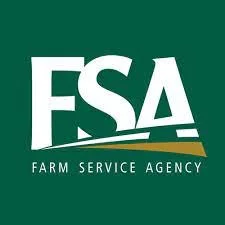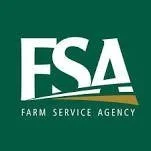The U.S. Department of Agriculture (USDA) today announced its selection of 50 projects for potential award, totaling approximately $300 million. These innovative projects will help improve access to land, capital, and markets for underserved farmers, ranchers, and forest landowners. The Increasing Land, Capital, and Market Access (Increasing Land Access) Program, which is funded by President Biden’s Inflation Reduction Act, works to increase access to farm ownership opportunities, improve results for those with heirs’ property or fractionated land, increase access to markets and capital that affect the ability to access land, and improve land ownership, land succession and agricultural business planning.
Read MoreAgricultural producers who have not yet completed their crop acreage reports after planting should make an appointment with their local U.S. Department of Agriculture (USDA) office before the applicable deadline, which for many places and crops is July 17. USDA’s Farm Service Agency (FSA) also reminds producers with login access to farmers.gov of several features that can help expedite acreage reporting, such as the ability to view, print and label maps.
Read MoreBetween 2002 and 2022, soybeans were the second-most planted crop in the United States, behind corn. The exception was in 2018 when acreage planted to soybeans surpassed corn. While the total acres planted to soybeans generally have been less than to corn, the rate of growth in soybean sowings has exceeded corn since the early 2000s.
Read MoreThe U.S. Department of Agriculture (USDA) is now accepting nominations for county committee members for elections that will occur later this year. Additionally, USDA’s Farm Service Agency (FSA) is unveiling a new GIS tool to make it easier for producers to participate in the nomination and election processes for county committee members, who make important decisions on how federal farm programs are administered locally.
Read MoreCongresswoman Julia Letlow (LA-05) gave an opening statement to the House Appropriations Committee regarding the Fiscal Year 2024 Agriculture Appropriations Bill. Congresswoman Letlow made clear her support for the Bill, and highlighted numerous reasons why its contents are needed for her constituents in Louisiana.
Read MoreThe U.S. Department of Agriculture (USDA) is updating the Emergency Relief Program (ERP) Phase Two to provide a method for valuing losses and accessing program benefits to eligible producers of certain crops, including grapes grown and used by the same producer for wine production or forage that is grown, stored and fed to livestock, that do not generate revenue directly from the sale of the crop.
Read MoreAgriculture Secretary Tom Vilsack announced today the U.S. Department of Agriculture (USDA) is accepting more than 1 million acres in this year’s Conservation Reserve Program (CRP) General signup. This is one of several signups that USDA’s Farm Service Agency (FSA) is holding for the program. The results for CRP General signup reflect the continued importance of CRP as a tool to help producers invest in the long-term health, sustainability, and profitability of their land and resources.
Read MoreThe U.S. Department of Agriculture (USDA) announced loan interest rates for June 2023, which are effective June 1, 2023. USDA’s Farm Service Agency (FSA) loans provide important access to capital to help agricultural producers start or expand their farming operation, purchase equipment and storage structures or meet cash flow needs.
Read MoreAccording to the National Agricultural Statistics Service in Louisiana, there were 6.9 days suitable for fieldwork for the week ending Sunday, May 28, 2023. Topsoil moisture supplies were 0 percent very short, 14 percent short, 66 percent adequate, and 20 percent surplus.
Read MoreThe U.S. Department of Agriculture (USDA) is extending the deadline for the Emergency Relief Program (ERP) Phase Two and Pandemic Assistance Revenue Program (PARP) to July 14, 2023, to give producers more time to apply for assistance. The original deadline was June 2.
Read MoreDuring the next several weeks, the U.S. Department of Agriculture’s National Agricultural Statistics Service (NASS) will conduct two major mid-year surveys, the June Agricultural Survey and the June Area Survey. The agency will contact producers across the country to determine crop acreage and stock levels as of June 1, 2023. In addition, NASS will collect information from farmers and ranchers from randomly selected land area segments across the state.
Read MoreAgriculture Secretary Tom Vilsack today announced plans to roll out $3.7 billion in Emergency Relief Program (ERP) and Emergency Livestock Relief Program (ELRP) assistance to crop and livestock producers who sustained losses due to a qualifying natural disaster event in calendar year 2022.
Read MoreUSDA’s Farm Service Agency (FSA) has provided additional flexibilities and further enhanced disaster recovery assistance provided by the Emergency Assistance for Livestock Honeybees, and Farm-raised Fish Program (ELAP), Livestock Indemnity Program (LIP) and Livestock Forage Disaster Program (LFP) in response to needs expressed by livestock producers across the U.S. who have experienced significant feed, forage and animal losses from natural disasters.
Read MoreThe U.S. Department of Agriculture will begin to administer two loan and grant programs worth nearly $11 billion to boost clean energy systems in rural areas, administration officials said Tuesday.
Congress approved the federal spending — $9.7 billion for a grant and loan program the department is calling the New Empowering Rural America program, or New ERA, and $1 billion for a Powering Affordable Clean Energy program that will provide partly forgivable loans — in the energy, health and taxes law Democrats passed last summer.
Read MoreThis report contains the results from the Crop Progress and Condition weekly survey. The survey is completed by parish extension agents’ visual observations and contact with producers in their parish.
Read More














